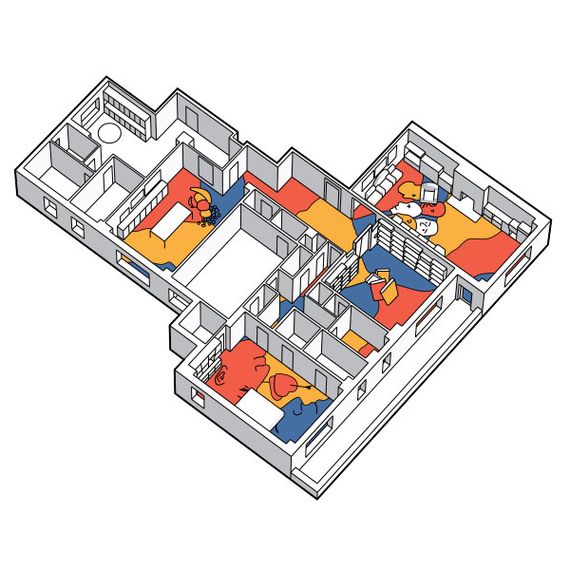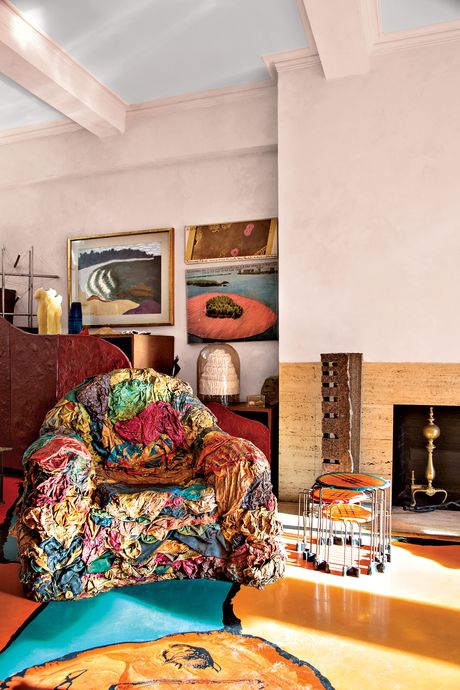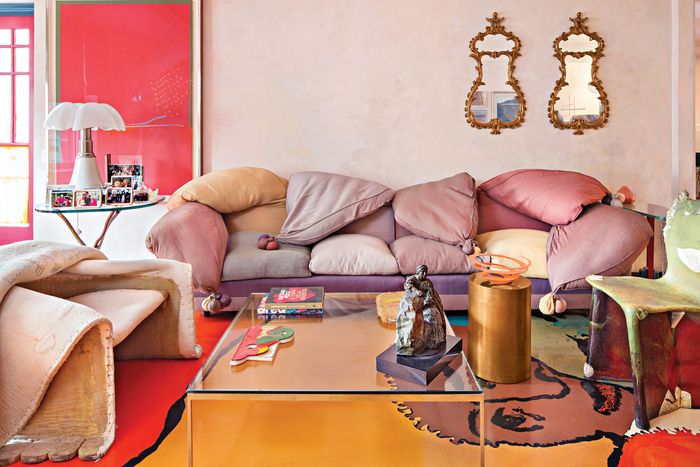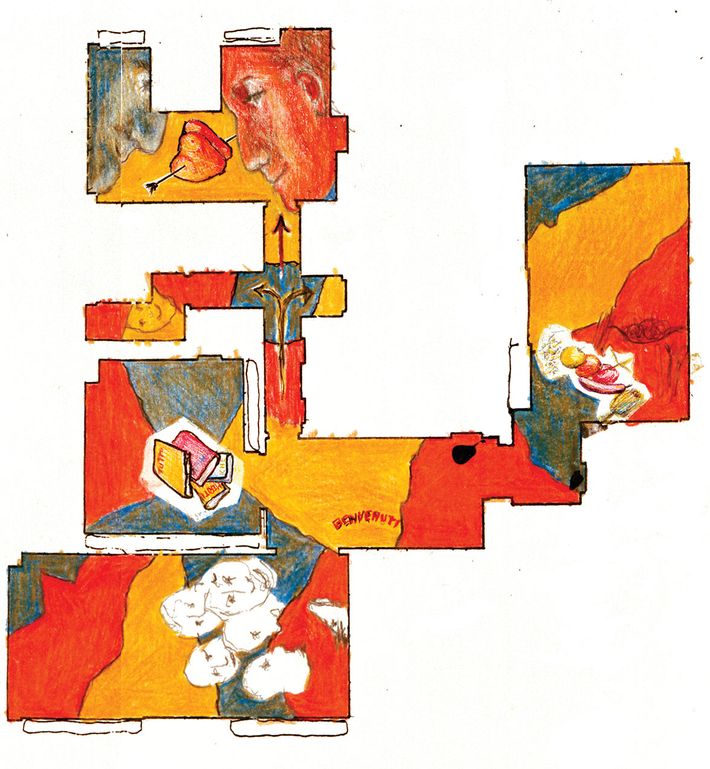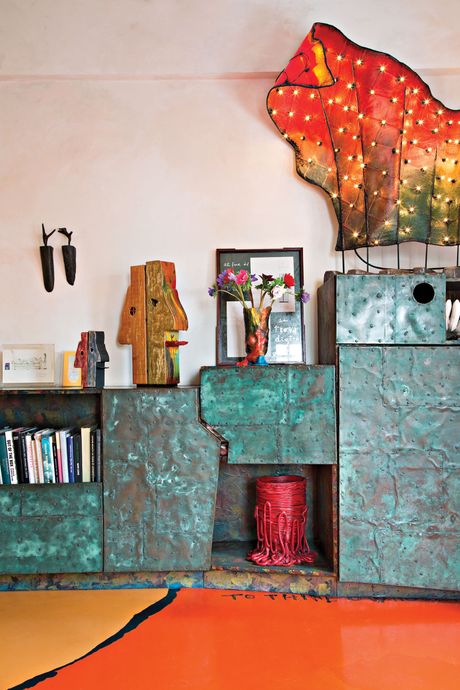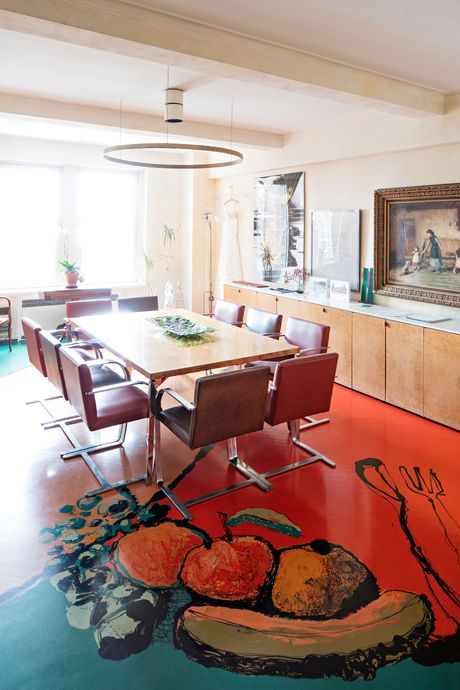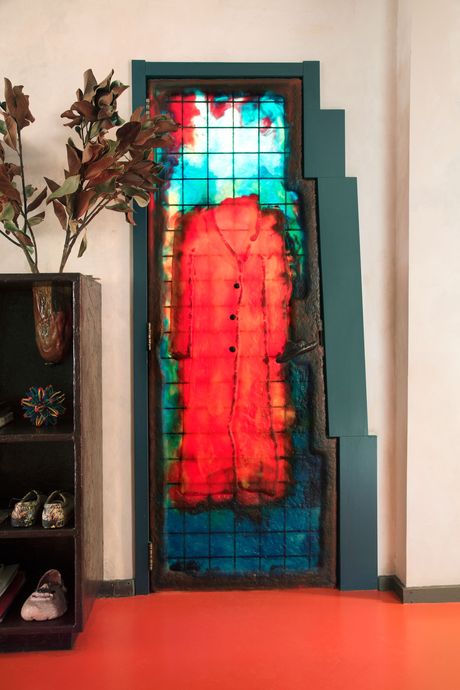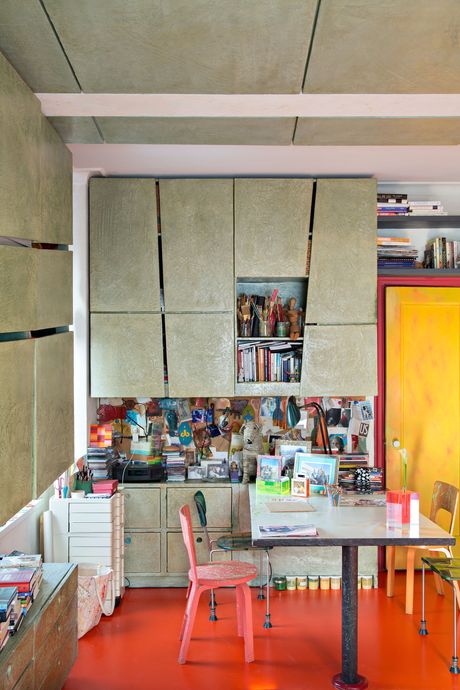Remembering Gaetano Pesce and His Stunning Park Avenue Work


The Entrance Hall: Ruth Lande Shuman’s Crayola-colored doors and storage cabinets were designed by Pesce, known for his innovative use of resin.
Photo: Floto+Warner
This article first appeared in the April 18, 2016, issue of New York Magazine, and has been updated with a tribute to Gaetano Pesce on the occasion of his death on April 3, 2024.
The first time I met Gaetano Pesce was at a wedding in France in 1988. He was with his good friend and sometime collaborator Ruth Shuman, and I was introduced to both by Murray Moss and Franklin Getchell, the owners of legendary downtown design shop Moss. We were guests at a grand destination wedding, the first and last of its kind I ever went to. I was feeling lost until I met this foursome who were so fascinating and fun. I soon realized that I was meeting the designer Gaetano Pesce, whose work I had admired for years.
Soon after the wedding, I went to visit Gaetano in the wonderland of his studio. He was the master of the wobbly vases infused with bold color that had shocked modernist sensibilities, the inventor of surreal furniture that took on shapes only seen in cartoons but, through his innovative genius, had become iconic designs. He was the terror of the design world as much as he was the darling of it.
He soon became a friend through dinners with Ruth and over the years of covering his work and attending his openings at galleries both here in New York and in Milan. One night at dinner together, he surprised me with the gift of a vase infused with tiny gold specks that has been a treasure on my desk ever since. He was my hero and guiding star when I needed to feel that all was right in the world because he was in it.
I had visited Ruth Shuman’s apartment as a guest at one of her parties, and I had never ever seen anything like it. Ruth had started the organization Publicolor, which helps at-risk youth succeed in school, and she is one of the most dynamic and get-it-done people in our city. She told me that when Gaetano first saw her home, it was decorated in beige tones of a formal Park Avenue penthouse, and he had been perplexed that she lived within a space that didn’t represent her. He soon fixed that by redoing the apartment floor to ceiling and with furniture in the rainbow colors of his world. It is an art installation like nothing else. One of the greatest honors of my career was when, in 2016, Ruth and Gaetano let me do this story on her apartment for New York Magazine.
Flash back to the 1980s, when a rarely played ivory piano sat in Ruth Lande Shuman’s beige living room. The palette was as soothing as cream of wheat. “I found it was too mild,” Shuman says. She started adding photographs and fabrics here and there — and then, she says, “I met Gaetano.” She’s referring to Gaetano Pesce, the Italian architect and industrial designer known for creating household objects out of resin and furniture from rags and moving blankets. In 1989, only a few years before famously making over the advertising offices of Chiat/Day, he turned his attention to Shuman’s apartment, posing a simple question: “Why doesn’t your apartment look like you?”
Illustration: Jason Lee
Shuman’s appetite for color was unleashed, and in 1996 she founded Publicolor, a nonprofit that uses design to empower public-school students by, among other things, painting drab classrooms bright, happy colors. Nowhere is it more evident just how important the psychological impact of color is than in this Park Avenue wonderland.
“An apartment is a portrait of a person,” Pesce says. Then, after a long pause, he adds, “Color is energy. Color can give us a better life.”
The Living-Room Chair: Pesce’s famous Rag chair is situated next to his nesting tables.
Photo: Floto+Warner
The Living-Room Sofa: The Giullare sofa, designed by Pesce, sports floppy cushions that are trimmed with bells wrapped in fabric. The pair of gilt-wood Chippendale mirrors, above, belonged to Shuman’s mother.
Photo: Floto+Warner
The Dining Room: Pesce drew the fork, knife, and spoon on the floor.
Photo: Floto+Warner
Living-Room Sitting Area: Pesce’s Sunset Over New York couch, with his table and resin vase in front.
Photo: Floto+Warner
The Floor Plan: As reimagined by Pesce.
Photo: Courtesy of Gaetano Pesce’s Office
The Living Room: Pesce designed the copper wall cabinet topped with his large Airport lamp, resin flower vase, and profile sculptures.
Photo: Floto+Warner
The Kitchen: A Saarinen table and chairs beneath Pesce’s Full of Energy chandelier.
Photo: Floto+Warner
The Dining Room: Shuman’s original dining table and Mies van der Rohe chairs were left untouched. The painting on the wall to the right by was in Shuman’s grandparent’s house in Canada. The ceiling light fixture over the dining table is by Edison Price.
Photo: Floto+Warner
Library Entrance: Pesce’s multicolor doors are flanked by walls with porthole windows.
Photo: Floto+Warner
The Coat Closet: Pesce’s coat closet can’t be mistaken for anything else.
Photo: Floto+Warner
The Bedroom Work Station: Pesce created an area of Shuman’s bedroom with a work table and cabinetry.
Photo: Floto+Warner
The Entrance to the Apartment: With “welcome,” in Italian, written on the floor as you enter.
Photo: Floto+Warner
See All
Source link

